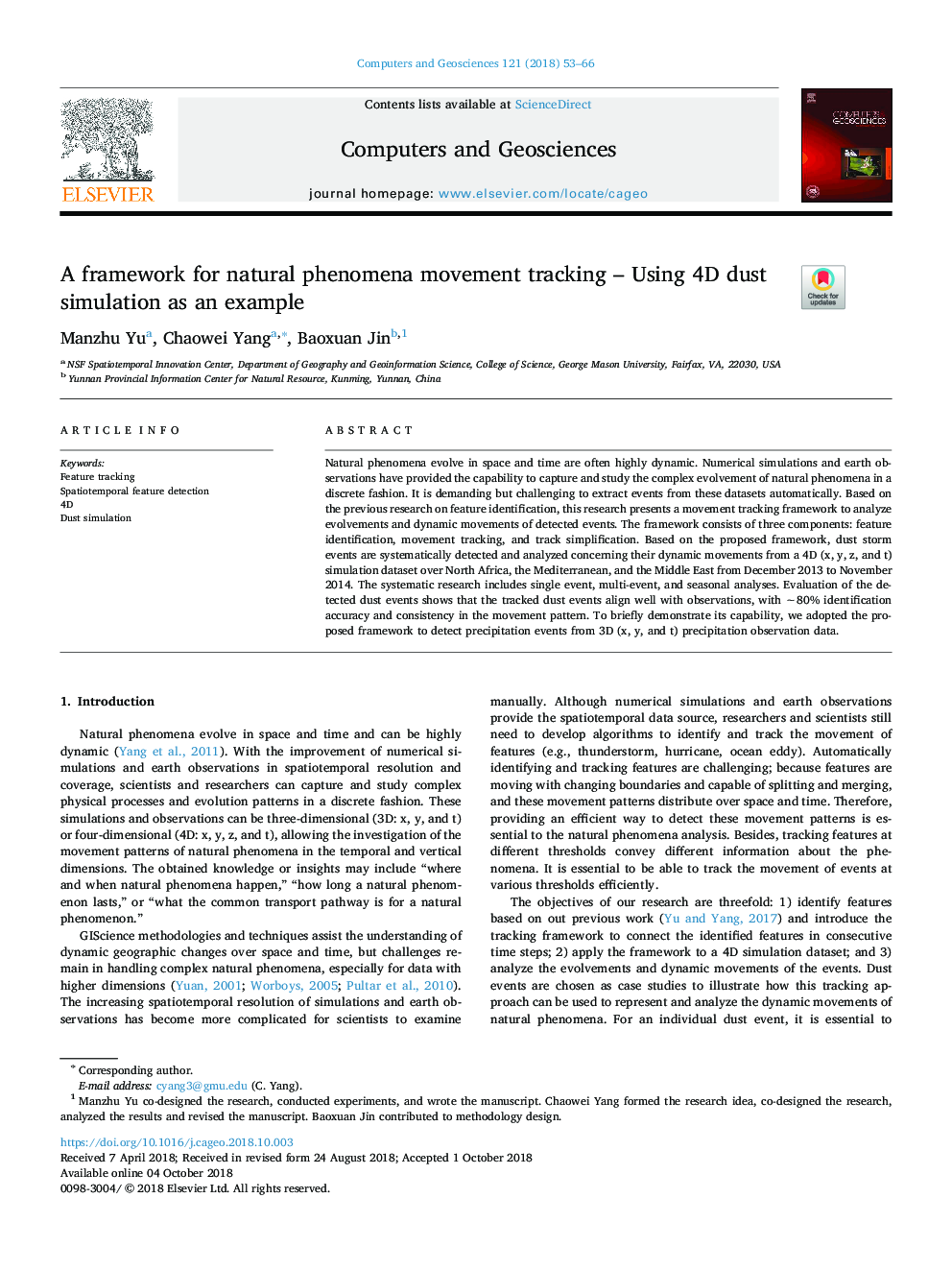| Article ID | Journal | Published Year | Pages | File Type |
|---|---|---|---|---|
| 11023928 | Computers & Geosciences | 2018 | 14 Pages |
Abstract
Natural phenomena evolve in space and time are often highly dynamic. Numerical simulations and earth observations have provided the capability to capture and study the complex evolvement of natural phenomena in a discrete fashion. It is demanding but challenging to extract events from these datasets automatically. Based on the previous research on feature identification, this research presents a movement tracking framework to analyze evolvements and dynamic movements of detected events. The framework consists of three components: feature identification, movement tracking, and track simplification. Based on the proposed framework, dust storm events are systematically detected and analyzed concerning their dynamic movements from a 4D (x, y, z, and t) simulation dataset over North Africa, the Mediterranean, and the Middle East from December 2013 to November 2014. The systematic research includes single event, multi-event, and seasonal analyses. Evaluation of the detected dust events shows that the tracked dust events align well with observations, with â¼80% identification accuracy and consistency in the movement pattern. To briefly demonstrate its capability, we adopted the proposed framework to detect precipitation events from 3D (x, y, and t) precipitation observation data.
Keywords
Related Topics
Physical Sciences and Engineering
Computer Science
Computer Science Applications
Authors
Manzhu Yu, Chaowei Yang, Baoxuan Jin,
